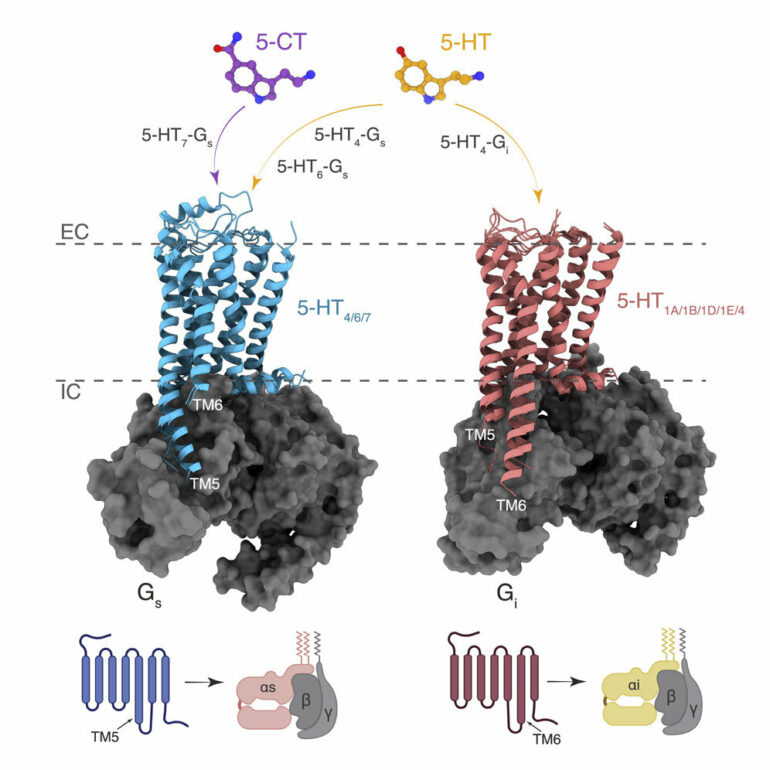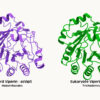Serotonin (5-HT) is one of the main neurotransmitters in the human central nervous system and peripheral nervous system. It helps regulate appetite, memory, cognition and mood through serotonin receptors (5-HTR).
A group of international scientists recently made a breakthrough in understanding the structure and function of serotonin receptors. This is the first time researchers have reported the structures of the 5-HT4, 5-HT6, and 5-HT7 receptors, and resolved the structures of all 12 5-HT receptor subtypes.
The study was published online in Molecular Cell on June 16.
Researchers led by H. Eric Xu from the Shanghai Institute of Materia Medica (SIMM) of the Chinese Academy of Sciences, in collaboration with researchers from Zhejiang University and the University of Copenhagen, systematically revealed the structural basis for the recognition of serotonin receptor subtypes by the small-molecule ligands 5-HT and 5-CT. They also elucidated the molecular mechanism for the selective coupling of Gs and Gi proteins by serotonin receptors.
The serotonin receptor family is one of the most complex subfamilies in the G-protein-coupled receptor (GPCR) superfamily and contains 12 subtypes. Different receptor subtypes play different physiological roles in the human body and are coupled with different kinds of G proteins. Among them, the 5-HT4, 5-HT6, and 5-HT7 receptors are mainly coupled to downstream Gs proteins, and the 5-HT1 and 5-HT5 receptors are mainly coupled to downstream Gi proteins.
Through structural comparison of these three Gs-coupled serotonin receptors to the Gi/o-coupled serotonin receptors, and to 19 additional Gs– and Gi/o-coupled class A receptor structures, the team uncovered a class-wide G protein selectivity mechanism that uses TM5 and TM6 switches.
“These findings advance the fundamental understanding of how serotonin receptors, the largest subfamily of class A GPCRs activated by the same endogenous ligand, create their wide diversity of cellular responses,” said Xu, corresponding author of the study.
Furthermore, these structural insights into ligand recognition provide the foundation for rational structure-based drug design targeting the 5-HT4, 5-HT6, and 5-HT7 receptors. These insights also help clarify how to achieve ligand selectivity within the complex serotonergic system.
The achievement not only revealed the molecular mechanism of the selective coupling of G-proteins by class A GPCRs but also filled in the last gap in the structural analysis of 5-HT family receptors, according to the researchers.
These systematic studies of serotonin receptors have greatly enriched our understanding of the structure and function of the serotonin system. Since depression, schizophrenia, and migraine may be linked to serotonin, this research may also contribute to treatments for these conditions.
More information:
Sijie Huang et al, GPCRs steer Gi and Gs selectivity via TM5-TM6 switches as revealed by structures of serotonin receptors, Molecular Cell (2022). DOI: 10.1016/j.molcel.2022.05.031
Provided by
Chinese Academy of Sciences
Citation:
Scientists make breakthrough in understanding serotonin receptors (2022, June 17)



